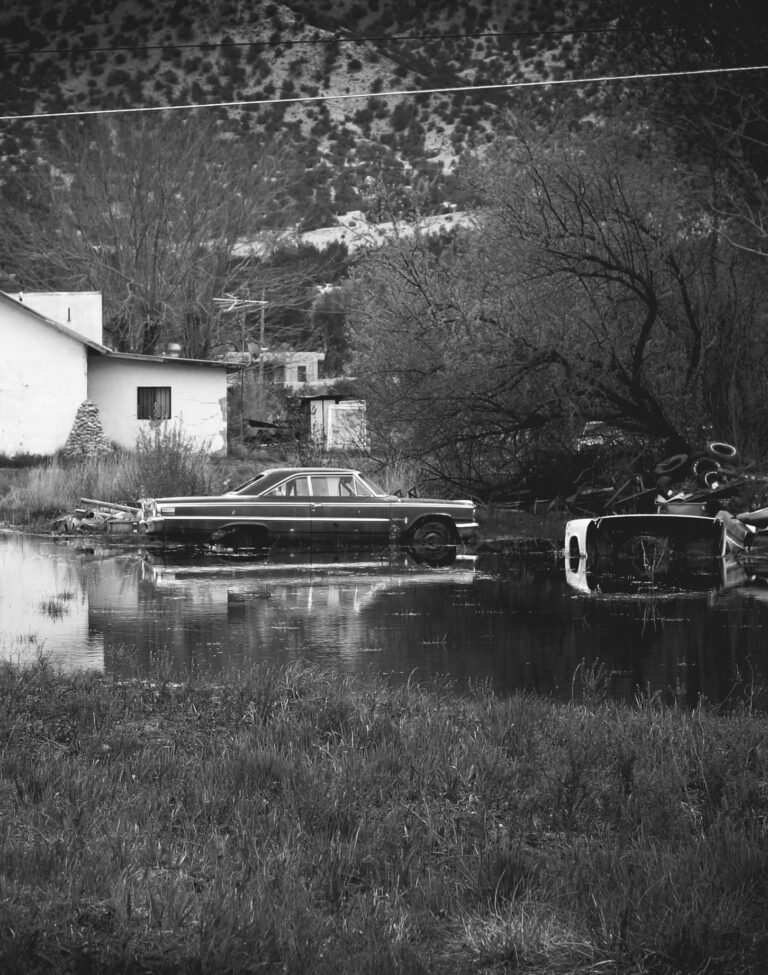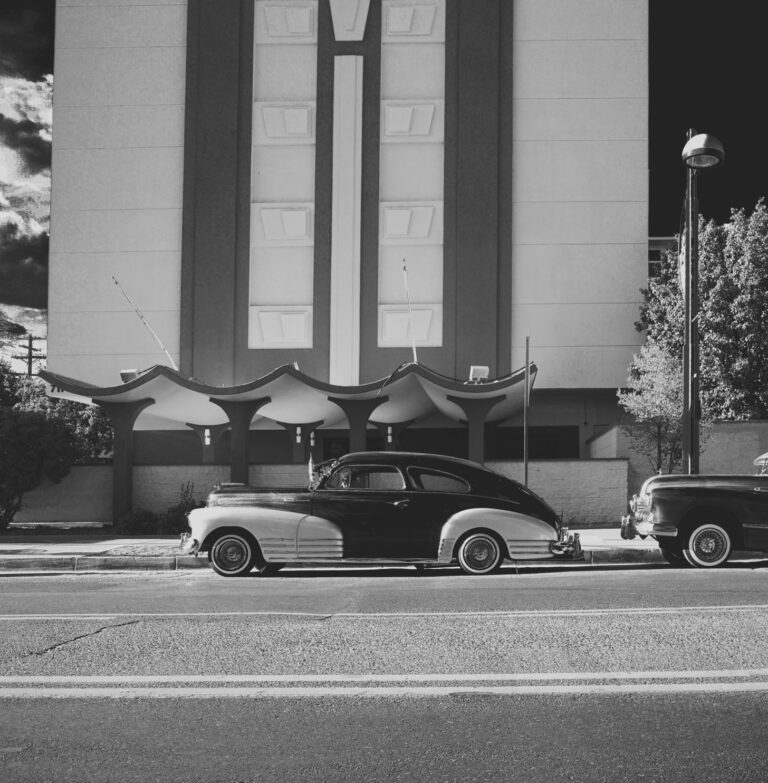Jessica Roybal possesses a rare advantage as a photographer; she lives somewhere interesting. As an architecture student, she came to photography to better understand how buildings interact with the street. As a New Mexican, she already knew what was there.If Roybal were in Los Angeles or New York, her career as a photographer might be very different (read: far more commercially successful), but she is in New Mexico and proud of it. Her work is about this place, this culture and the people. Roybal has launched Instagram channels and captained teams of photographers through international photography projects with the aim of showing the world a street-level view of our city, yet has oddly faced challenges from some of New Mexico’s largest established promoters of the state’s culture for simply trying to show her work and the work of other photographers. Weekly Alibi sat down with Jessica Roybal to talk about her inspirations, her new show and her problems at the New Mexico State Fair. The following is an edited version of that conversation.Weekly Alibi: Has anyone called you an architectural critic as a photographer?Jessica Roybal: I got drawn to photography as an architectural investigation. Then, as a part of that, the streetscape began to inform my studies, because you have to study what buildings are doing to the street and how they are responding to the street. Finding, again, those moments of light and where things are coming through and the lines. I am definitely drawn to shadows and lines. I love it.Then from the streetscape, I went to the signs. I was along Route 66 going to the school of architecture. That quickly began to be a passion. I also started to develop a community of people that were also affectionate about Route 66, the signs and chasing that. Growing up in northern New Mexico there was also the culture that I come from looking at the cars. Now all of the sudden I’m like “Wow, the cars have the fonts the signs and the streets have.”Old car photographs can be a nostalgic trope, as can signs, but you’ve approached them in a modern way. Was that intentional? Are you heading in a direction photographically?I don’t think I really have a plan. It’s hard some days where you’re like “what can I find in my everyday that is inspiring me to take a photograph and share it.” I try to be true to myself with the images that I share on social media. It’s how I feel or what I am feeling.You consider yourself an Instagram photographer?I am an Instagram photographer. I have my other cameras that I’ll pull out, but I don’t share that work on my social media. I need to do it instantly. I don’t have time to go and edit or polish.Tell me about your new show.This is my second show with the Albuquerque Art Walk. We did a show called Cruising that was based on cars and the culture of cruising. There were a group of photographers that were in that.When was this?This was last July. My friends with their low riders came out. They all showed their support for showing their photos, photos of them.What is in this show?It’s what I think of as staying true to my New Mexico self with cars in the landscape and objects as well. I’ve done this wheat paste process where I got these doors from the Habitat Restore and I apply these rice paper printed images onto the doors. I’m trying to make it more artistic and not so refined and ridged. Do you want to say something about the New Mexico State Fair and how you were treated?The same thing happened with New Mexico True. When I first moved back to Albuquerque, I started Igersabq [the Instagram group @Igersabq] and they were using all the photographer’s images on their social media and not giving credit.Who was?New Mexico True. They get tons of money from the state to market our state and were pulling free images off of Instagram and not crediting. Not even saying “at so and so.” That’s when I started Igersabq. I was feeling very defensive about the community. That was three or four years ago.So, the fair.I’ve been shooting low riders and the community of low riders because I feel like it’s their passion. A lot of times, these guys could be in gangs, but instead they find these families in their low rider communities and they support one another. It’s not a cheap habit. I have respect for them and they’ve gotten to know me. I’ll chase them around town because I want to capture them on the street that’s modern with this old, cool car. I’ve been doing that for years and most of them have already gotten to know me pretty well. Except, I don’t really shoot the ’90s cars and I happened to shoot this Cadillac on hydros. That image was printed, it was part of the Cruising show then I entered it in the state fair in September [2018]. Unfortunately, the gentleman that saw the photo went into the Hispanic Arts Cultural Center and reacted so poorly that they actually even had to close the gallery. He was demanding that the photo be given to him because it was a photo of him that he did not acknowledge or give rights for me to take his photo.But this was shot out in the street.It was shot right on Central on a Sunday. He said he was unaware of me taking his photograph when he is actually throwing up a peace sign and looking at my camera.Nobody should have an expectation of privacy when they are on Central.Right. Unfortunately, the gallery curator did not put him in his place. He was able to escalate. Security had to be called. I was actually called on my cell phone and told you need to come here or else we are going to give him your photo.They were going to actually hand your photograph over to him?Yes. Because they felt like it belonged to him as well, that I was in the wrong and that I put them in a really bad position because I put someone’s photo in there without their permission.The curatorial people at the state fair were unaware how photography works?Apparently. When I arrived, of course, he is yelling at me. The fair is operating, but the gallery is closed.They don’t know how to walk a belligerent person out of the fair?It was way too much. I had to confront him and say, “Here’s my card. If you want to call me or you want an attorney to call me, here, but you’re not taking this piece. I invested money and time in this and you’re in the wrong. You need to go read the law.” I had a few other photos [of people in the fair] and they were proud. This guy he just was in the wrong. The state police had to come. They were like, “No sir. If I’m standing on the street, somebody can take a picture of me and there is nothing I can do about it.” So, he was escorted [out of the fair]. I left with my piece because they took it down and said I was putting them at risk.Did anyone call to apologize? Yes. The marketing person [for the fair] was like, “I’m sorry this happened. Please bring the piece back. We were in the wrong.”The curator was not the one who contacted you, it was the marketing people for the state fair.Yes.Will you ever put anything in the state fair ever again?I’m not sure.
New Mexico’s Finest
A Photography Exhibit of Jessica Roybal
Opening Friday, May 3, 5pm-8pm
The Boiler Monkey
600 Central Ave. SW














